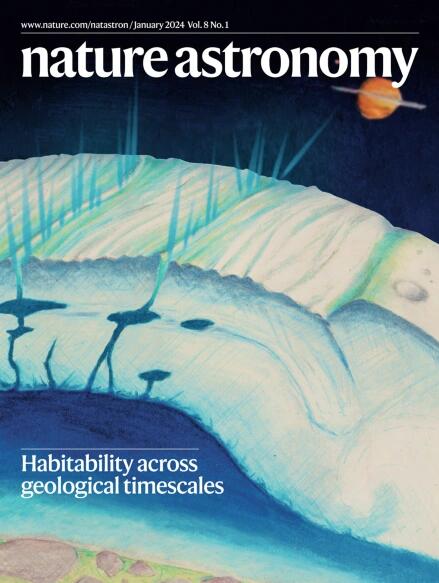始终如一地“了解你的明星”
IF 14.3
1区 物理与天体物理
Q1 ASTRONOMY & ASTROPHYSICS
引用次数: 0
摘要
“了解你的恒星,了解你的行星”:对恒星参数和行为进行精确和准确的估计是可靠地描述绕其轨道运行的系外行星的必要条件。然而,这些数据通常是由许多不同的调查和设施收集的,造成了不一致的存档。Patrick de Laverny和他的同事们用盖亚天体测量学和光谱学展示了2573颗系外行星主恒星及其相关的3556颗系外行星的特性。盖亚数据发布3号确定了超过4300颗系外行星恒星,其中约42%具有完全特征的大气。作者使用这个子样本,结合其他地面光谱调查,以内部一致的程序提取它们的质量、半径和亮度。精度的提高是实质性的:恒星半径的不确定性比文献中的两倍还要好。相关系外行星的半径和质量然后通过适当地重新缩放文献中的数据来计算,并考虑到这些新值。本文章由计算机程序翻译,如有差异,请以英文原文为准。
‘Know thy star’ consistently
求助全文
通过发布文献求助,成功后即可免费获取论文全文。
去求助
来源期刊

Nature Astronomy
Physics and Astronomy-Astronomy and Astrophysics
CiteScore
19.50
自引率
2.80%
发文量
252
期刊介绍:
Nature Astronomy, the oldest science, has played a significant role in the history of Nature. Throughout the years, pioneering discoveries such as the first quasar, exoplanet, and understanding of spiral nebulae have been reported in the journal. With the introduction of Nature Astronomy, the field now receives expanded coverage, welcoming research in astronomy, astrophysics, and planetary science. The primary objective is to encourage closer collaboration among researchers in these related areas.
Similar to other journals under the Nature brand, Nature Astronomy boasts a devoted team of professional editors, ensuring fairness and rigorous peer-review processes. The journal maintains high standards in copy-editing and production, ensuring timely publication and editorial independence.
In addition to original research, Nature Astronomy publishes a wide range of content, including Comments, Reviews, News and Views, Features, and Correspondence. This diverse collection covers various disciplines within astronomy and includes contributions from a diverse range of voices.
 求助内容:
求助内容: 应助结果提醒方式:
应助结果提醒方式:


